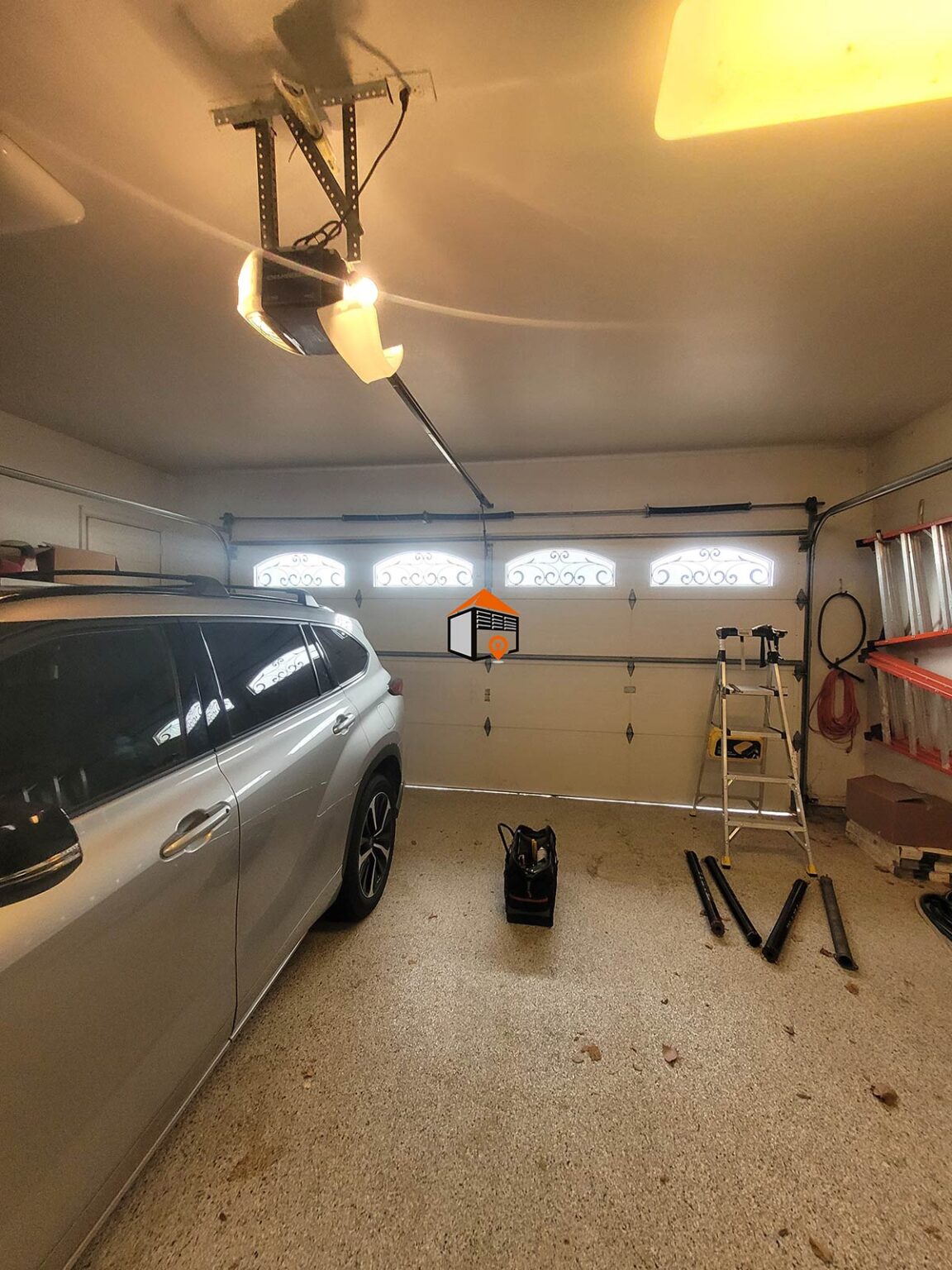One of my torsion springs looks like it is curling up but the other one is straight. Is this normal?
Oh absolutely, this is not normal; a torsion spring should always be straight and not curled when it is fully loaded. The first thing you need to know about torsion springs is that there are always left or right-hand wound springs. This can be confusing, but it is marked by the color of paint at the direct end of the spring cone where you wind it. It will either be red or black.
Safety Precautions with Torsion Springs
Anytime there is red paint sprayed on a part of a garage door, this usually means danger—do not remove this screw or bolt. Red typically indicates left, while black means right side of the garage door. These distinctions are crucial if you ever try to fix or adjust your garage door on your own without a professional. If you see a bolt or a screw on a garage door painted red, always avoid tampering with it, as this could lead to major problems, serious injury, or even death.
Identifying Spring Misalignment
Most garage door manufacturers, though not all, will paint the screws or bolts that tie the bottom bracket at the bottom left-hand or right-hand side of your door. Regarding the torsion springs, when they move along the torsion pole, there are usually two causes for a curling spring. The first is that the spring may not be installed in the correct position. In other words, if your right-hand spring is curling up, someone may have mistakenly installed a left-hand spring in its place.
Causes of Curling Torsion Springs
The other reason for this effect would be that when the spring was wound up, it could not slide along the pole. A spring, when wound, is going to be about 2 inches longer than when it is unwound. For instance, if the curling spring is on the right-hand side of the garage door, the cone should be painted black. Do not confuse the right or left-hand color with the actual color of the spring that is spray-painted on the wire part of the spring, as this color will determine the wire size and gauge.
Understanding Wire Size and Spring Colors
The spring can be any color from white, yellow, red, gold, green, blue, to brown. If the spring is confirmed to be in the correct left or right-hand position based on the color code, and it is still curling, this usually indicates that there is an issue with the winding process. Specifically, the spring may not have had the ability to slide properly along the pole as it was wound.
Impact of Torsion Tube Distortion
This problem is often caused by a distortion in the torsion tube. There could be too much of a dent in the tube from tightening down the lockdown screws, which prevents the spring from moving freely across the torsion tube pole. If someone winds the spring and it does not move along the tube as intended, the result will be a curling spring.
Solutions for Curling Springs
To correct this problem, most of the time, you can use a metal file to smooth down the area where the spring cannot move across the pole. However, if this does not resolve the issue, replacing the torsion tube may be the only way to ensure the spring winds correctly.
When to Call a Professional
In most cases, you will need to call a professional garage door technician to deal with this issue. If you lack experience with garage door torsion springs, it’s best to leave it to the professionals. Attempting repairs without adequate knowledge can lead to safety hazards and further complications.
